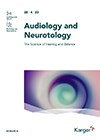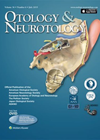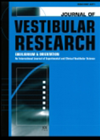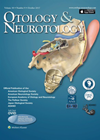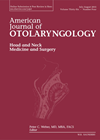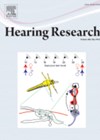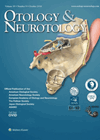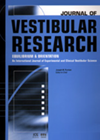
Journal Reviews
Elevated intracranial pressure versus migraines versus sinusitis?
This narrative review discusses the challenges faced by an otolaryngologist to differentiate elevated intracranial pressure (eICP), migraines and chronic rhinosinusitis (CRS). Facial pain, pressure, aural fullness, muffled hearing and tinnitus are often common symptoms described by patients with all three...
Are you still talking about Covid?
Bell’s palsy (idiopathic facial nerve palsy) has an annual incidence of 15 to 30 cases per 100,000 people. This study aims to assess the effect of Covid and Covid vaccination on this incidence using a large database. Authors used TriNetX,...
Epley manoeuvre angles
Posterior canal benign paroxysmal positional vertigo (PC-BPPV) is a common vestibular cause of dizziness regularly encountered in the outpatient clinic. The condition is often diagnosed with a positive Dix-Hallpike manoeuvre (DHM) – turning the patient’s head 45 degrees to the...
The cocktail party conundrum
I feel, with slight sadness and disappointment, that a good cocktail party, dresses, punch bowls and all is not currently in its heyday and, therefore, opportunity of attending is slim. However, from what I remember, they tend to be a...
Expectations and practice
Reading this paper is reassuring. It does not appear to be groundbreaking in its results but research can be as useful, if not more so, when it consolidates knowledge and helps unify the research base. This paper focuses on those...
Cochlear implant – should we follow the curve?
Slimmer electrodes were developed by cochlear implant companies under the premise of hearing preservation (HP). Electrode types included stylet-curved electrodes sheath-curved electrodes, and straight-flexible electrodes. Previous reviews did not compare sheath and straight electrodes. A systematic review and meta-analysis were...
Ramsey Hunt causes more widespread vestibular dysfunction that other causes of acute peripheral vestibulopathy
The extent of semicircular canal dysfunction in different conditions causing acute vestibular syndrome (AS) has not been widely studied. The authors share their findings in a retrospective study of patients presenting with AVS in three conditions: Ramsay Hunt syndrome (RHSD),...
Navigate me there, to my new CAT
Transcanal endoscopic ear surgery (TEES) has gained momentum with its close-up high definition wide-angled views. Skeptics point out single-handed operating in a 2D view. The authors made use of navigation and augmented reality (AR) to present an additional minimal access...
Bell’s palsy – antivirals and steroids for all?
The role of antiviral medications in the treatment of Bell’s palsy remains somewhat controversial. Antivirals alone do not appear to be helpful, whereas numerous studies have shown that corticosteroids improve the chance of a full recovery compared to placebo. What...
Not to be mis-underestimated
It is a very rare occurrence to find a paper looking at NF2 and the auditory system. There seems to only be a couple on NF2 prevalence in the population, so this is unsurprising. As far as I can recall...
Cochlear implant and age
In an American ageing society with more prevalent hearing loss, fewer geriatric patients are opting for cochlear implants (CI). This is mainly due to comorbidities and potential complications. Authors conducted a retrospective review of CI patients from 2015 till 2021....
Virtual vestibular rehabilitation (VR) is as effective as in-person VR
The effectiveness of vestibular rehabilitation (VR) for patients with several vestibular disorders is well established. Access for in-person clinic-based VR is however patchy and limited. To widen access, offering VR via virtual platforms is increasingly being adopted. The authors conducted...



